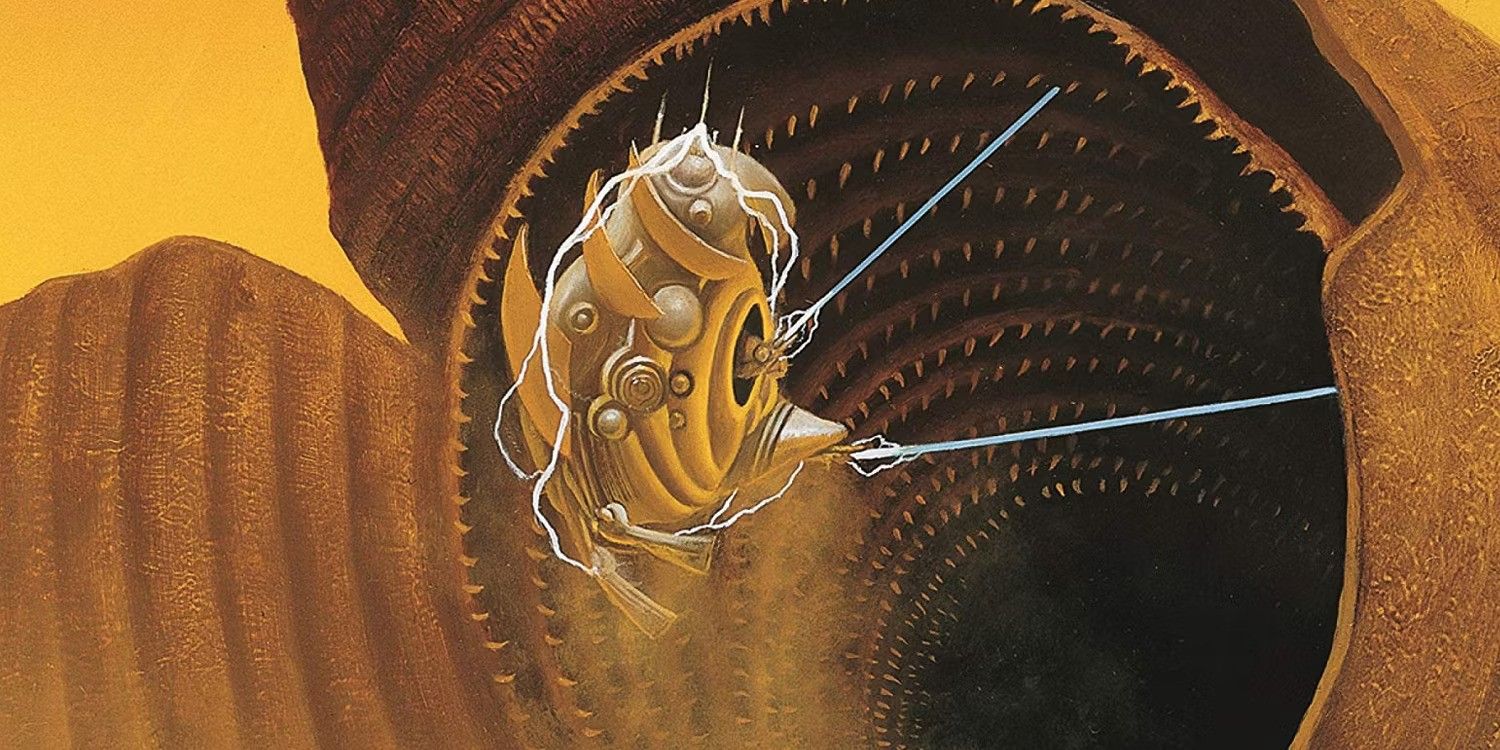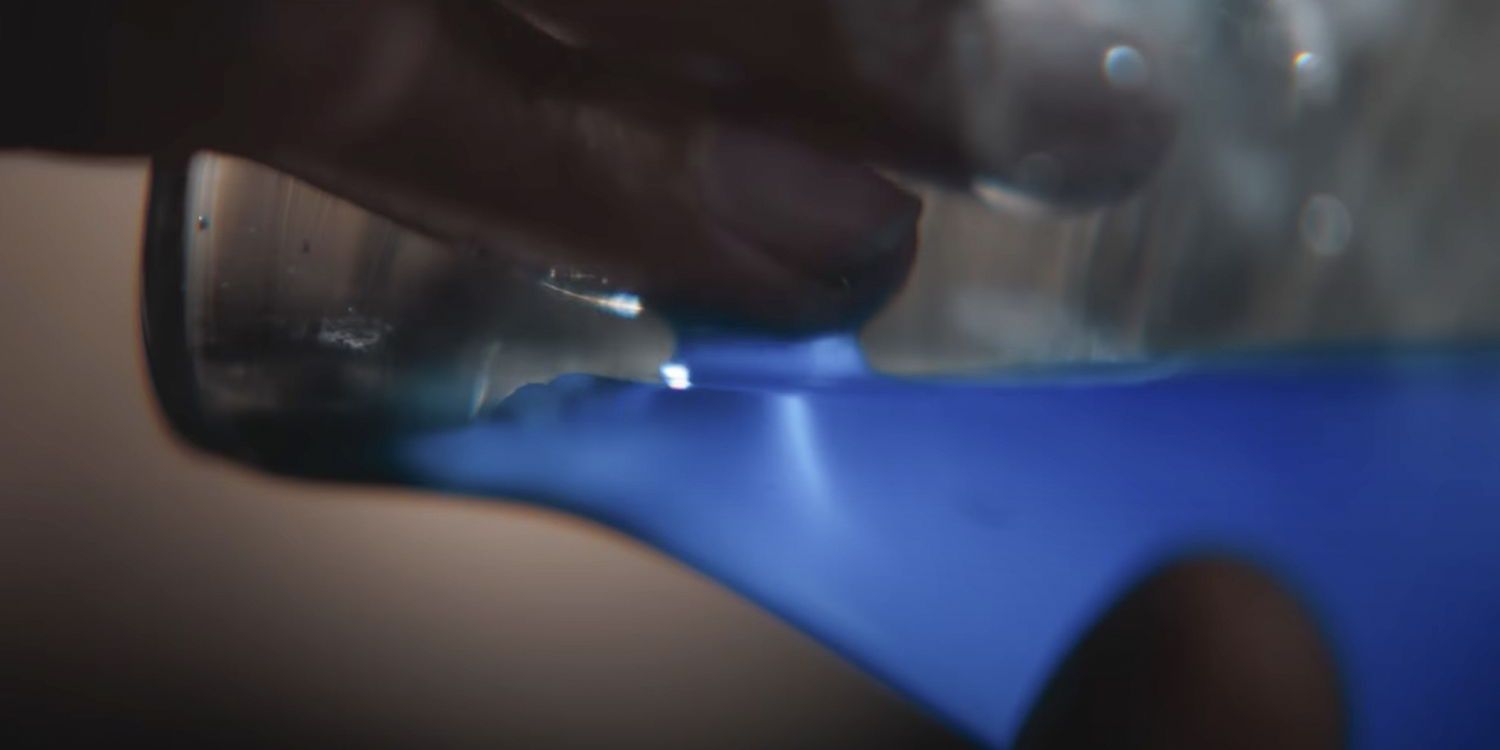Dune has inspired a nearly 60-year-long argument about the boundaries between fantasy and science fiction. Frank Herbert's seminal classic features spaceships, faster-than-light travel, laser guns, and aliens. It also delivers predestined heroes, a legendary prophecy, superpowers, and at least one magic potion. The line is blurry at best, and Dune's blend of genres helps it succeed. The Water of Life allows the story to introduce some of its most esoteric elements.
Dune and Dune: Part Two are among the strangest studio blockbusters of the modern era. They're bold and weird in endlessly compelling ways. Denis Villeneuve smartly eschews previous attempts to cut out challenging elements, instead immersing the viewer in the universe he loves. Those who felt the first entry could have gone further with its science-fantasy details will love Dune: Part Two, as will almost anyone who sees it.

February Is Your Last Chance To Watch Dune On Netflix
Denis Villeneuve's Dune is still on Netflix, but not for long. With Dune Part 2 arriving soon, now is the perfect time to watch it.
How is the Water of Life created?
The Water of Life is a unique chemical concoction available only on Arrakis. It's a vibrant blue liquid that can't occur naturally. The first, arguably only, ingredient is a young sandworm's bile. An infant of the Shai-Hulud species is roughly the size of an anaconda when it finishes its metamorphosis from a sandtrout. To extract its bile, a Fremen must drown the young sandworm. It expels a toxic substance as a final dying gasp as it suffocates. Water is vanishingly rare on Arrakis, though it's instrumental in the natural process that creates the spice melange and the unnatural process of acquiring bile. Fremen drown the sandworm and collect their fluid, which must be detoxified. Counterintuitively, the Fremen must feed someone the poison to use its positive effects.
The Water of Life is technically the substance that results from elevating a Bene Gesserit Sister to Reverend Mother status. A new Reverend Mother on Arrakis must imbibe the sandworm bile. The substance is poisonous, usually killing any who consume as much as a drop. A trained Bene Gesserit Sister can alter the molecular characteristics of the chemicals in their body. Their test is to drink sandworm bile and use their psychic powers to convert it into a harmless substance. Doing so takes an immense toll but instantly increases the new Reverend Mother's power. After she detoxifies the bile, she regurgitates or perspires the new mixture. The Fremen collect the new Reverend Mother's fluid and dub it the Water of Life.
Who drinks the Water of Life?
While only prospective Reverend Mothers typically drink the sandworm bile, Fremen love to imbibe the Water of Life. The regurgitated Water of Life becomes a powerful drug known as an awareness spectrum narcotic. Like the spice melange, the Water of Life and the process that creates it awakens psychic powers. Fremen share the Water of Life, enjoying it together as a celebratory culmination of the ceremony. The Fremen enter a spice orgy, a cathartic release propelled by prescient and telepathic awakenings. This experience unites a Fremen sietch, making a tribe feel more like a family.
What is the cultural significance of the Water of Life?
Every Fremen sietch has a Reverend Mother, who maintains the genetic memory of generations before her to guide the locals. The Water of Life ritual commemorates the end of one Reverend Mother's service and the beginning of a new one. Only women can take the Water of Life. Any man who tastes the sandworm's bile dies a horrible death. The lone exception is the legendary Kwisatz Haderach.
Bene Gesserit sisters believe that a man who can take the Water of Life will gain access to their male and female genetic memories. They'll also earn prescience beyond time and space, the ability to see into all possible futures. Lady Jessica Atreides is part of an ages-old program to breed the Kwisatz Haderach. The sisterhood told her to conceive a daughter with Duke Leto Atreides. That daughter would conceive a son with Feyd-Rautha Harkonnen. Jessica's grandson would ostensibly be the most promising candidate for the Kwisatz Haderach. Instead, Jessica gave birth to Paul Atreides. Though Paul fights his destiny, he becomes the first man to take the Water of Life. That event is the most significant religious awakening in Fremen culture and the beginning of their return to prominence. To quote Paul after he awakes from his three-week recovery:
There is in each of us an ancient force that takes and an ancient force that gives. A man finds little difficulty facing that place within himself where the taking force dwells, but it’s almost impossible for him to see into the giving force without changing into something other than man. For a woman, the situation is reversed.
The Water of Life is a fascinating element of Dune's worldbuilding. It goes unmentioned through most of the first half of the book. When it is introduced, it heightens the narrative stakes and adds new dimensions of bizarre lore. Paul choosing to imbibe the Water of Life is the turning point that puts a metaphorical foot on the gas pedal, escalating everything at a breakneck pace. The Water of Life means everything to the Fremen, and its weight in the story can't be overstated.

Dune: The Butlerian Jihad, Explained
The epic future of Frank Herbert's classic sci-fi story takes place several hundred years after the AI apocalypse.




